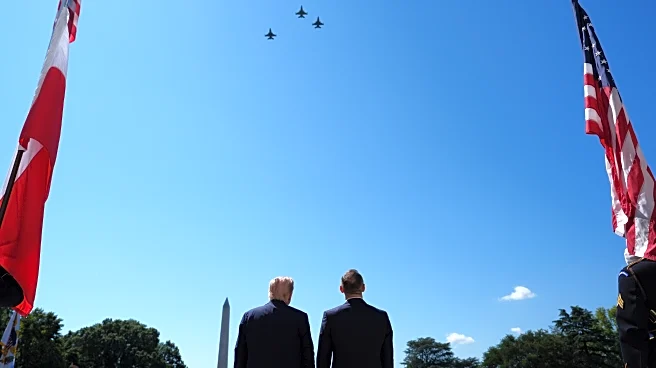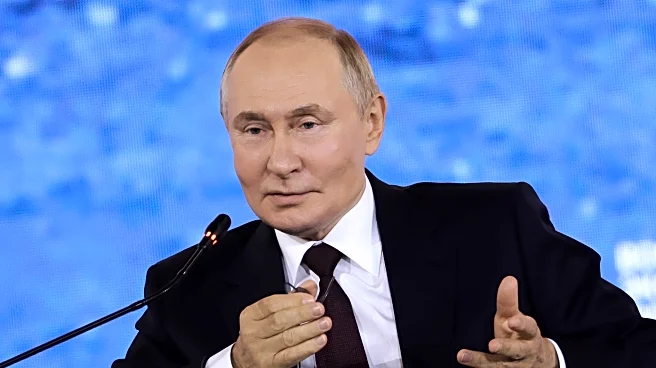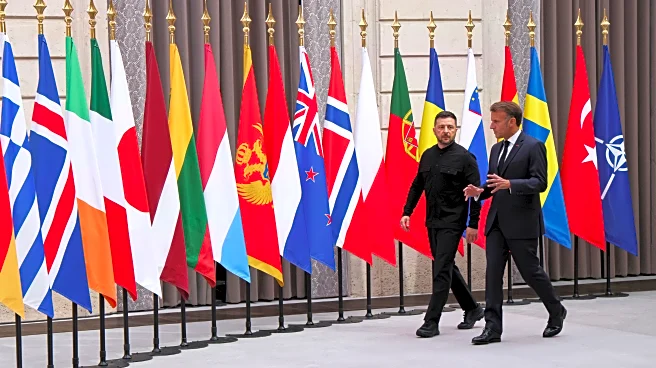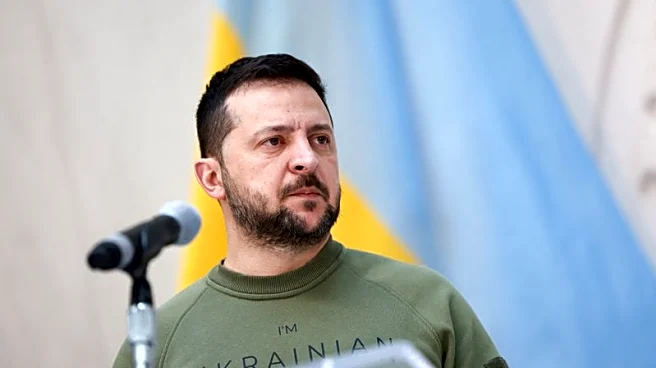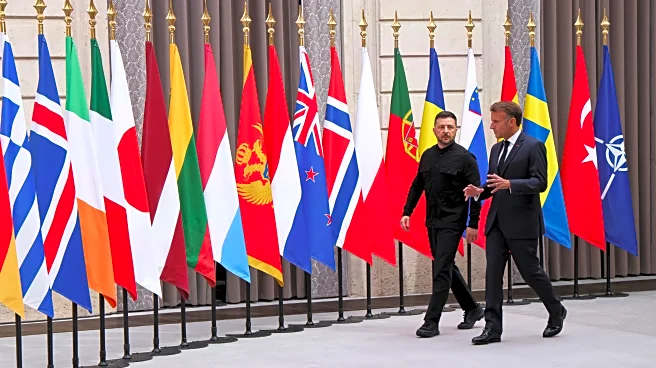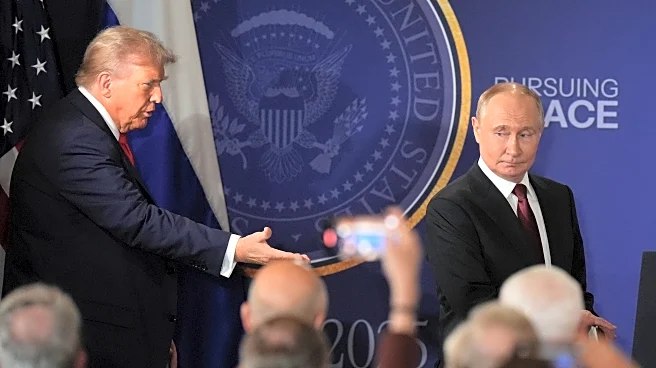What is the story about?
What's Happening?
The United States is contemplating taking a leading role in monitoring a proposed buffer zone within Ukraine, as part of ongoing peace negotiations with Russia. This buffer zone would serve as a demilitarized area separating Russian and Ukrainian territories. The U.S., leveraging its technological capabilities, would utilize drones and satellites to oversee the zone, coordinating with other countries involved in the monitoring process. The plan suggests that troops from non-NATO countries, such as Saudi Arabia or Bangladesh, could secure the zone, avoiding direct NATO involvement due to Russian sensitivities. The proposal follows a meeting between President Trump and Russian President Vladimir Putin, although progress towards a peace deal has stalled. The plan remains tentative, pending agreement from both Putin and Ukrainian President Volodymyr Zelenskyy, as well as other involved leaders.
Why It's Important?
The establishment of a buffer zone in Ukraine could significantly impact regional stability and international relations. By avoiding NATO involvement, the plan aims to address Russian concerns while providing security assurances to Ukraine. This approach could facilitate a peace agreement, potentially ending the ongoing conflict. The involvement of non-NATO countries in securing the zone reflects a strategic move to balance interests and avoid escalating tensions. Additionally, the U.S. role in monitoring the zone underscores its commitment to supporting Ukraine and maintaining geopolitical stability. The plan also includes measures to ensure Ukraine's economic security, with Turkey overseeing maritime activities in the Black Sea, highlighting the multifaceted approach to peace and security in the region.
What's Next?
Further discussions are expected among Ukraine's allies, known as the 'coalition of the willing,' to formalize aspects of the security guarantees. The Pentagon, led by Air Force Gen. Dan Caine, is involved in talks focusing on deterrence, training, and defense industrial cooperation. A potential $100 billion deal is under discussion, allowing Ukraine to purchase American weapons in exchange for intellectual property rights to Ukrainian-developed systems. The plan's success hinges on diplomatic negotiations and the willingness of involved parties to agree on security guarantees and rules of engagement. President Trump's decision will be crucial in shaping the final outcome, as ongoing diplomatic efforts continue.
Beyond the Headlines
The proposed buffer zone and security guarantees raise ethical and legal questions regarding international intervention and sovereignty. The involvement of non-NATO countries in securing the zone reflects a shift in traditional security arrangements, potentially setting a precedent for future conflicts. The plan's emphasis on economic security highlights the interconnectedness of military and economic stability, underscoring the importance of comprehensive peace strategies. The long-term implications of this approach could influence global diplomatic practices and reshape alliances, as countries navigate complex geopolitical landscapes.
AI Generated Content
Do you find this article useful?




